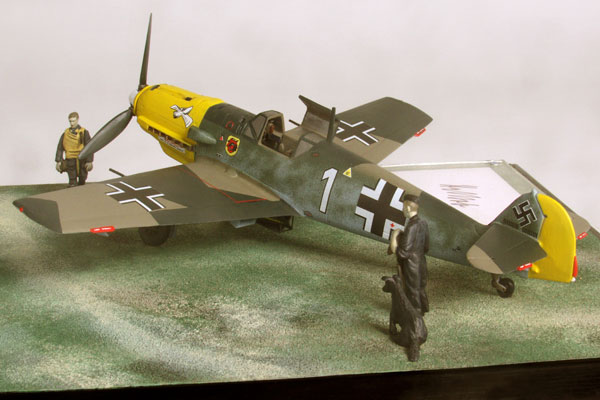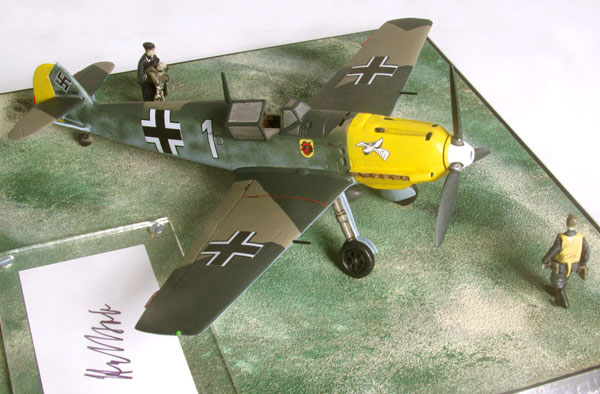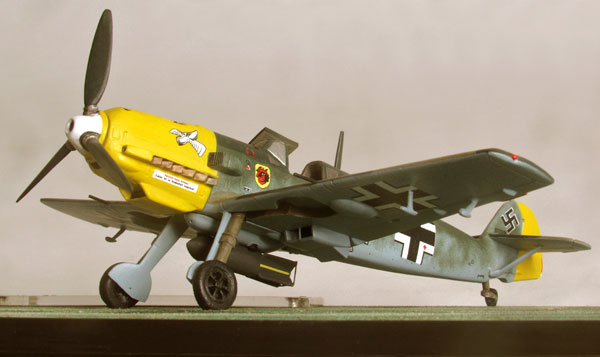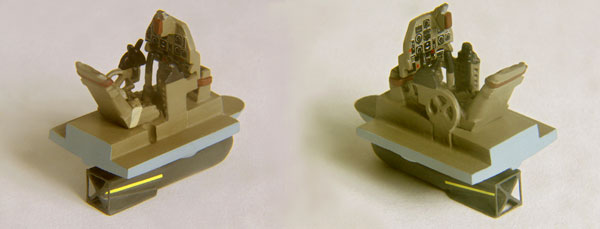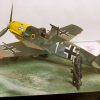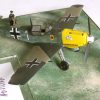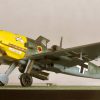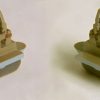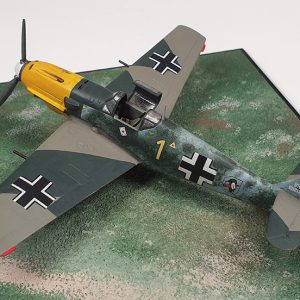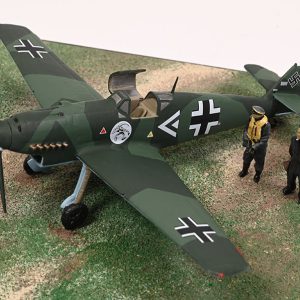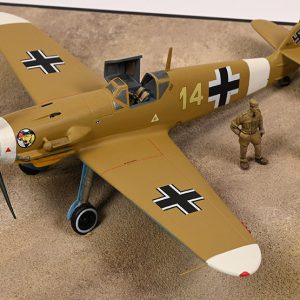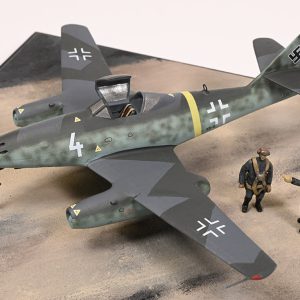Messerschmitt Bf 109E-4/B ‘White 1’ 9./JG54
Oberleutnant Hans-Ekkehard Bob, Quines, 1940.
Hans-Ekkehard Bob was born on 24th January 1917 in Freiburg in Breisgau, Germany. He developed a passion for aviation at an early age, inspired by air displays involving the famous aerobatic pilot Eric Haal. Pursuing his dream, Bob joined the Luftwaffe in 1936 with the rank of a Fahnenjunker (officer candidate). During the occupation of the Sudetenland, he flew his first missions, primarily escorting bombers and transport aircraft, piloting an Arado Ar 68 biplane.
As Schwarmfuhrer of 9. Staffel/JG 54, he began combat missions in Poland and France. During the French campaign on 10th May 1940, Bob, claimed his first victory at the controls of a Bf 109E, when he shot down a Gloster Gladiator over Tongeren in Belgium. At the end of fighting in France, Bob’s group moved to Calais in preparation for the Battle of Britain. His squadron flew fighter cover for Luftwaffe bomber sorties and escort duties with Fiat CR.42 biplanes from the Italian Air Corps. In combat over Canterbury, Bob’s Bf 109E was shot through the radiator, causing the engine to overheat. Bob made a successful return flight to France by adopting a technique combining short periods of powered flight, to gain altitude, with unpowered descending glides that allowed his Bf 109E’s Daimler-Benz DB601 engine to cool. This successful manoeuvre was adopted by other pilots and became known in Luftwaffe circles as “doing a Bob”.
As a further test of his innovative skills, Bob was charged with developing fighter-bomber (Jabo) tactics against targets in southern England. He eloquently communicates his experiences in a post-war account: “Our missions against England continued and were increasingly difficult. The poor weather conditions in the autumn of 1940 made it almost impossible to fly sorties. Despite all difficulties, the German pilots remained confident. The British fighters would no longer take off and engage in aerial combat when German bombers were not seen in the skies over Britain. This enabled the German fighters to roam the skies from southern England to London without enemy contact. To lure the British fighters into battle, a few Staffeln of Bf 109’s were fitted with bomb racks. This may have been the birth of the “Jagdbomber,” or fighter-bomber. As Staffelkapitan of 9./JG54, I was to attempt a test flight with a 250 kg bomb attached under the fuselage of a Bf 109. At the time, this was considered almost impossible and a ‘Himmelsfahrkommando’ or suicide mission, because it wasn’t known if the aircraft could withstand the added weight of the bomb. As fighter pilots, we had no idea of how to go about with bombs, how to aim and hit a target, or even how to go about flying a bombing mission. I actually had no prior experience with bombing. The take off with the bomb, from a meadow at Quines, was quite risky. As I became airborne, I realized that I just couldn’t drop the bomb anywhere. What should I do with the bomb? As on so many previous occasions, I again realized how often spontaneous decisions were made. Without much deliberation, I noticed that from the British mainland a small piece of land extended toward the sea (Dungeness). This was where I could perhaps drop my bomb and maybe even hit a target! I wasn’t able to determine where the bomb actually fell. In order to approach our targets with the correct glide angle, we applied lines on the sides of the canopy windows. As usual, improvising. In time, we achieved quite satisfactory results. In 1967 I was invited to London for the 50th anniversary of the Royal Air Force. A former British fighter pilot asked me secretively, why in 1940 we had bombed the peninsula of Dungeness when there wasn’t anything there worthwhile to bomb? After I explained to him that we had done our practice bombing there; he nodded understandingly. We now began to fly with bombs against England, attacking various targets. Our first targets were the Biggin Hill airdrome and the Tilbury docks near London, where warships were being constructed.”
By November 1940, Bob was Staffelkapitan of 9./JG54 and had recorded 19 kills. He was awarded the Knight’s Cross of the Iron Cross (Ritterkreuz des Eisernen Kreuzes) by Reichsmarschall Hermann Göring on 7th March 1941. During World War II, Bob flew approximately 700 combat missions, and claimed 59 victories.
The Messerschmitt Bf 109E-3, the variant that became familiar during the Battle of Britain, differed from the later Bf 109E-4 model mainly in the area of the canopy, the E-4 model having flatter sides and armour plating. The E-4/B variant was powered by a DB 601Aa engine, and 211 of these fighter-bombers were produced.
Bf 109E-4/B “White 1” was painted in grey (RLM 02) and black green (RLM 70) splinter camouflage on its upper surfaces, carried black green (RLM 70) mottle on its fuselage sides and light blue (RLM 65) on its undersides. The machine sported yellow identification markings on the nose cowling and tail fin. In addition to standard Balkenkreuz (stylised Iron Cross) and Hakenkreuz (Swastika) markings, and the flying clog emblem of JG 54, White 1 carried a distinguishing red Devil’s Head emblem fore of the cockpit area. Upon joining 9 Staffel, Bob asked a sergeant who was a skilled artist, to create several ideas for a unit emblem. The one which Bob chose was the “Devil’s Head”.
No story of Hans-Ekkehard Bob would be complete without mentioning one of his most loyal compatriots throughout the Battle of Britain period. Like many pilots during the war, he acquired a faithful canine companion, named Chica, who was reputedly something of an aviation enthusiast herself and eagerly accepted invitations from her master to fly in “White 1”.


